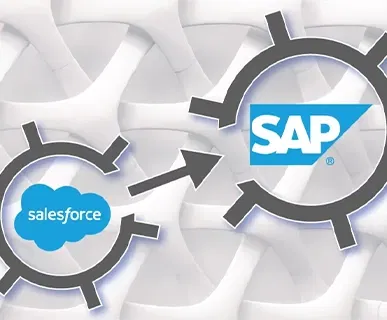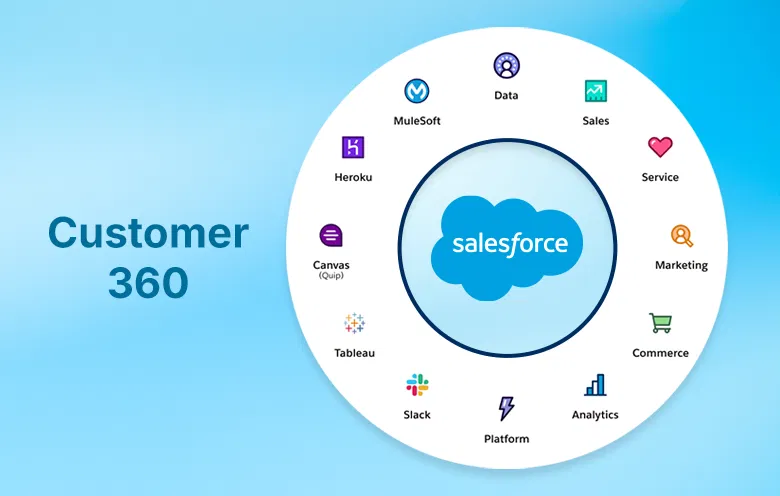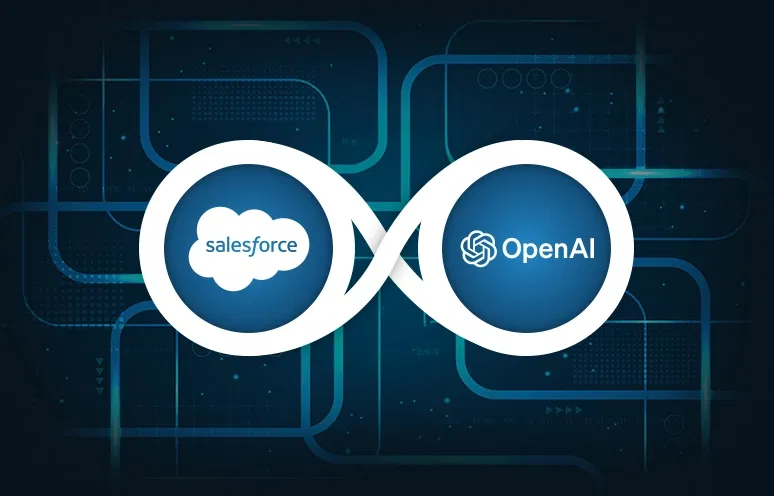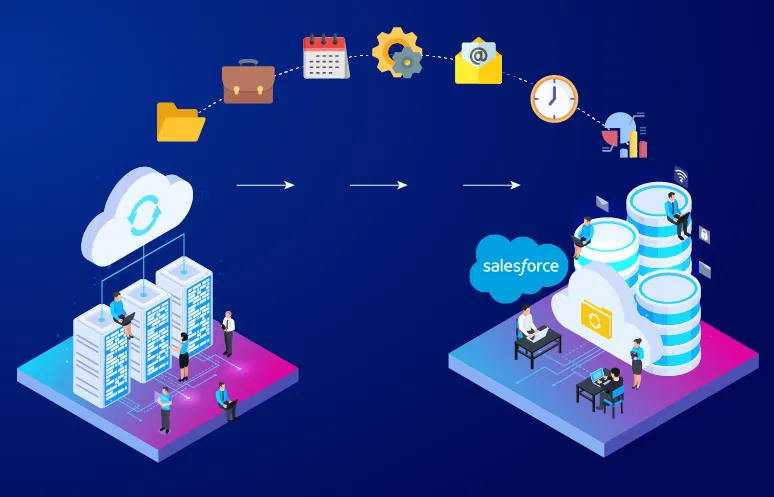It has become a benchmark for customer-centric businesses to get a 360-degree view of the customer. Today, success isn’t measured by products or services you sell. It is all about offering personalized experiences at every touchpoint.
To accomplish this, you need to bring together customer data from various sources. These may include sales, service, marketing, commerce, and more. Hence, you must base every interaction on a single, unified customer profile to provide tailored experience.
With Salesforce Customer 360 Data Model, companies are able to dismantle data silos, unify fractured records, and build a real-time, AI-driven customer profile that facilitates smart engagement. This blog discusses the role of Salesforce Data Cloud, the business rationale for one customer view, real-world applications, and the most significant advantages of using Customer 360 for driving personalization and growth.
What is Salesforce Customer 360 Data Model?
Salesforce Customer 360 Data Model is a single, integrated data model. It brings customer data from many sources together into one complete picture of the customer. It acts as a foundation for Salesforce’s Customer 360 platform. Moreover, it enables companies to eliminate data silos, create real-time insights, and provide hyper-personalized experiences in sales, service, marketing, and commerce.
Explore: Harness the full potential of Customer 360 with our Salesforce consulting services.
Why is unified data model important?
Modern businesses engage customers through various channels, such as CRM, websites, social media, email, and point-of-sale transactions. However, these interactions reside in isolated data silos. This keeps companies from having a complete understanding of customer activity.
The Customer 360 Data Model addresses this issue by:
- Consolidating customer information from multiple sources in a standard format
- Matching and deduplicating records to produce a single source of truth
- Using AI and real-time processing for predictive analytics and personalization
Key capabilities of the Salesforce Customer 360 Data Model
Data unification and identity resolution
The model ingests customer data from multiple systems and uses AI-driven matching algorithms to resolve duplicate or fragmented records.
Example:
A single customer may exist in the CRM as “John D.” with an email address but in the e-commerce database as “John Doe” with a phone number. Customer 360 links these records to form a unified profile.
Real-time data processing and activation
Salesforce Data Cloud enables real-time ingestion and processing of customer interactions.
Example:
A customer browses a product online, and within seconds, they receive a personalized offer via email or SMS, based on their buying behavior.
AI-powered insights and predictive analytics
With Salesforce Einstein AI, the Customer 360 Data Model helps businesses generate customer behavior predictions and deliver proactive recommendations.
Example:
AI can predict which customers are at risk of churn and trigger targeted retention campaigns.
Standardized and extensible data structure
The model provides predefined industry-standard data objects (DMOs) while allowing customization based on business needs.
Example:
A retail business may have predefined objects for order history, while a healthcare company may add custom attributes for patient records.
Key components of Salesforce Customer 360 Data Model
Salesforce Customer 360 Data Model is based on a structured approach. It unifies, organizes, and analyzes customer data. It comprises a number of important elements that facilitate seamless integration of data, relationship development, and actionable insights.
Subject area:
A subject area represents a business concept that groups related data objects. It helps in structuring the data model and enables efficient organization of the data.
Examples: Sales orders, loyalty programs, customer engagement data, etc.
Data stream:
A data stream is the pipeline through which external data sources are ingested into Salesforce Data Cloud. These streams can be based on:
- Batched data – Uploaded in bulk at scheduled intervals.
- Real-time data streams – Captures customer actions instantly.
Examples: Marketing Cloud Engagement data extensions, CRM records, website interactions, etc.
Data Lake Object (DLO):
A DLO is a storage container for raw data imported via data streams. It acts as a staging area before data is structured and processed.
Function: Retains data in its original form for advanced analytics and AI processing.
Data Model Object (DMO):
A DMO is a structured format for organizing data within Salesforce. These objects help businesses manage and analyze information efficiently.
Types:
- Standard DMOs – Predefined by Salesforce (e.g., sales orders, party identification, email engagement).
- Custom DMOs – Tailored to specific business needs.
Attribute
An attribute, also called a field, represents a specific data point within a DMO.
- Examples: First name, email address, purchase history.
- Comparable to: A field in a Marketing Cloud data extension.
Foreign Key
A foreign key is a unique identifier that links related data across multiple sources, ensuring data consistency.
Example: A customer ID that connects purchase history with email interactions.
Fujifilm Graphics Systems commerce portal development with Salesforce
How these components work together
- A data stream pulls information from a CRM, website, or third-party platform.
- The data is stored in a Data Lake Object (DLO) for processing.
- It is structured into Data Model Objects (DMOs) based on Subject Areas like sales orders or customer engagement.
- Attributes within DMOs define specific data points (e.g., email, transaction amount).
- Foreign Keys establish relationships between different datasets, ensuring a unified customer profile.
Overview of Data Cloud and its role in creating customer profiles
Salesforce Data Cloud acts as the backbone of the Customer 360 Data Model. It integrates data from various touchpoints—CRM, third-party apps, IoT devices, and external data sources. This allows businesses to:
- Aggregate real-time data from different systems
- Standardize customer information into a unified schema
- Provide a holistic customer view for better engagement and decision making
Suggested: How AI automates customer profiling for marketing, sales, and customer support teams
Why Data cloud is essential in creating customer profiles
Salesforce Data Cloud plays a crucial role in building comprehensive, real-time customer profiles. Here’s why it’s essential:
-
- Real-time data integration
Data Cloud ingests structured and unstructured data from CRM, marketing, e-commerce, IoT, and third-party sources, keeping customer profiles in sync. - Identity resolution & single customer view
It removes duplicates and matches identities across platforms, assigning a universal customer ID, making accurate, consistent profiles possible. - AI-driven insights for personalization
With AI-powered analytics, companies can discover customer behavior, preferences, and intent, powering hyper-personalized interactions. - Scalable data processing
Data Cloud handles large volumes of data in real-time, providing businesses with actionable information without performance bottlenecks. - Compliance & governance
It handles data privacy, security, and consent across geographies. This enables organizations to comply with GDPR and other regulatory needs.
- Real-time data integration

Top use cases of Salesforce Customer 360 Data Model
| Use case | Challenge | Solution |
|---|---|---|
| Unified customer profiling for personalized marketing | Fragmented customer data across CRM, email marketing, e-commerce, and social media. | The Customer 360 Data Model aggregates customer interactions. It creates a single source of truth for targeted marketing. |
| AI-powered sales recommendation | Sales teams lack visibility into customer preferences, purchase intent, and past interactions. | AI-driven insights analyze historical transactions, engagement trends, and intent signals to suggest next-best actions. |
| Real-time customer support and case resolution | Support teams handle multiple customer touchpoints (calls, emails, chatbots, social media) but lack a unified history of interactions. | The Customer 360 Data Model centralizes support tickets, past conversations, and product usage data to provide a holistic view of each customer. |
| E-commerce and omnichannel experience | Customers engage with brands through websites, mobile apps, physical stores, and social media, but data is often siloed. | Customer 360 synchronizes purchase history, browsing behavior, and preferences, enabling seamless shopping experiences. |
| Fraud detection and risk management | It is challenging to flag fraudulent activities due to disconnected data sources. | Customer 360 links transaction patterns, behavioral signals, and risk scores, flagging anomalies in real-time. |
| Predictive customer retention and churn prediction | Companies lose customers due to poor engagement tracking and lack of proactive retention efforts. | It uses AI and predictive analytics to identify at-risk customers based on declining engagement and negative sentiment analysis. |
| Customer loyalty and engagement optimization | Companies lack real-time data on customer preferences, rewards, and engagement levels. | The Customer 360 Data Model tracks loyalty program activities, purchase behavior, and feedback, improving customer retention. |
Achieve customer-centric growth with Salesforce Customer 360 Data Model
The Salesforce Customer 360 Data Model empowers businesses to centralize customer data, enhance personalization, and drive intelligent decision making. It enables you to unify sales, marketing, support, and commerce data. You can create efficient, hyper-personalized experiences that foster customer loyalty and business growth.
At Softweb Solutions, we specialize in Salesforce Data Cloud implementation. Our Salesforce certified developers help you integrate, optimize, and leverage real-time customer insights. From data modeling, AI-driven analytics, to effortless CRM integration, our team can customize a Customer 360 strategy to fit your business needs. Get in touch today to start your journey toward a truly connected customer experience.
FAQs
What is Salesforce Customer 360 Data Model?
Salesforce Customer 360 is a unified data model that connects customer data across all Salesforce applications to give businesses a single, complete view of each customer. It integrates data from marketing, sales, service, commerce, and more to help teams work smarter and deliver better experiences.
How does Customer 360 unify customer data?
Customer 360 employs an identity resolution system that is specially designed to match and connect customer data across various systems. It breaks down the data silos, generates one customer ID, and keeps updates in real time so that all departments see consistent and correct information.
Is Customer 360 Data Model secure and compliant?
Yes, Customer 360 adheres to enterprise-level security and regulatory compliances like GDPR and HIPAA. It has native governance capabilities, data encryption, and access controls to secure customer data.
How does the Customer 360 Data Model improve customer experience?
By providing all teams with a unified, real-time picture of each customer’s history, preferences, and interactions, Customer 360 powers tailored support, directed marketing, and more attuned experiences. Customers receive faster, more reliable service at every touchpoint.
Can Customer 360 be customized for different industries?
Absolutely. Salesforce provides industry-specific data models such as Financial Services Cloud or Health Cloud that work on top of Customer 360. These prebuilt extensions include custom objects and workflows tailored to industry needs. To know more about how to customize it for your organization, contact us.



